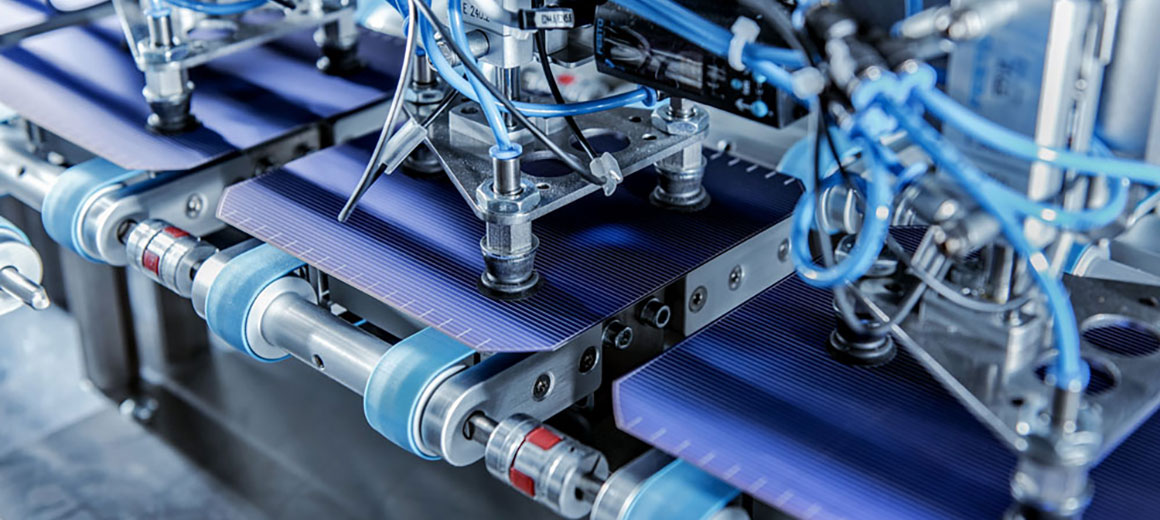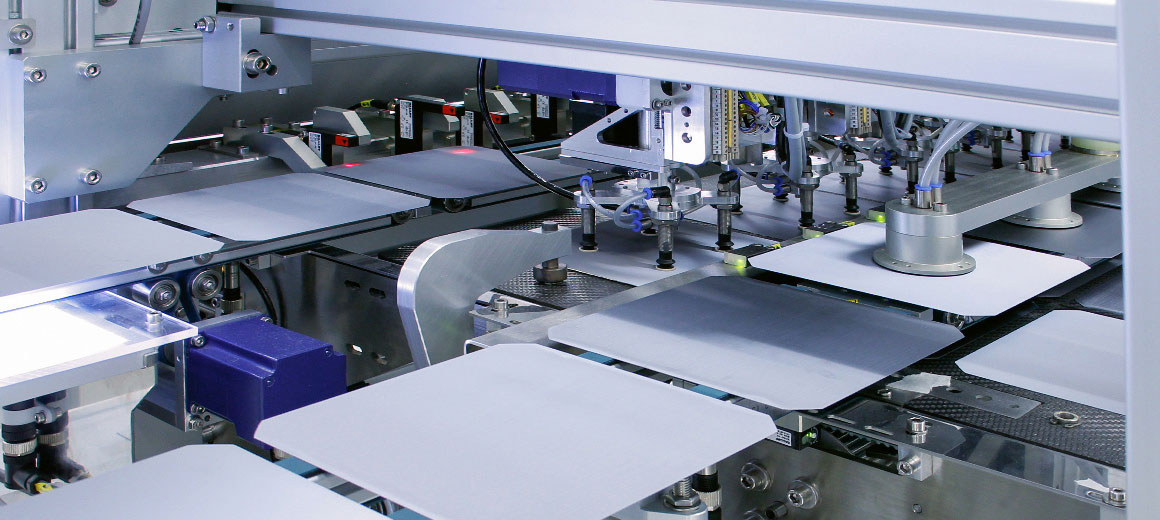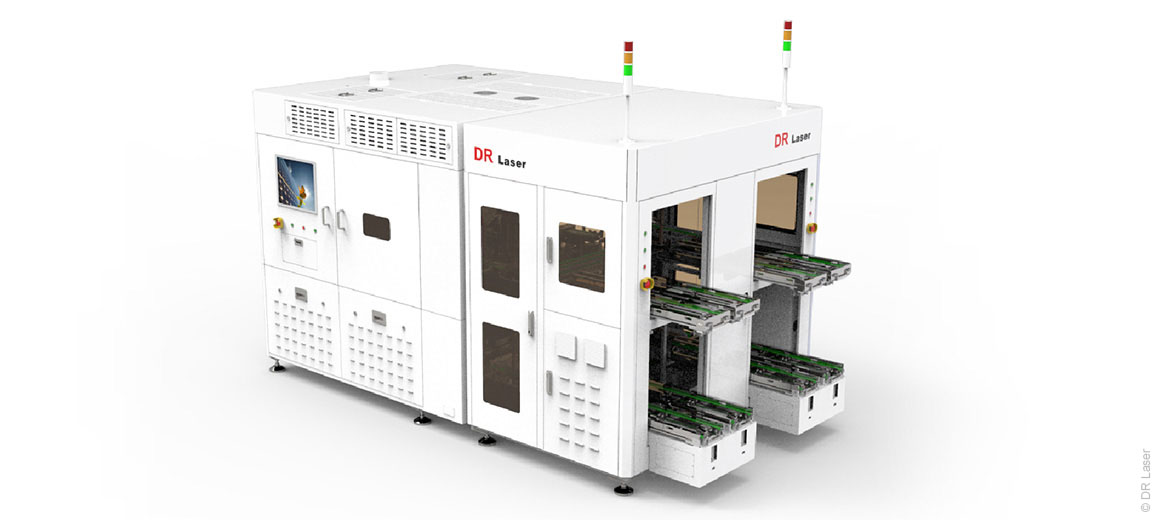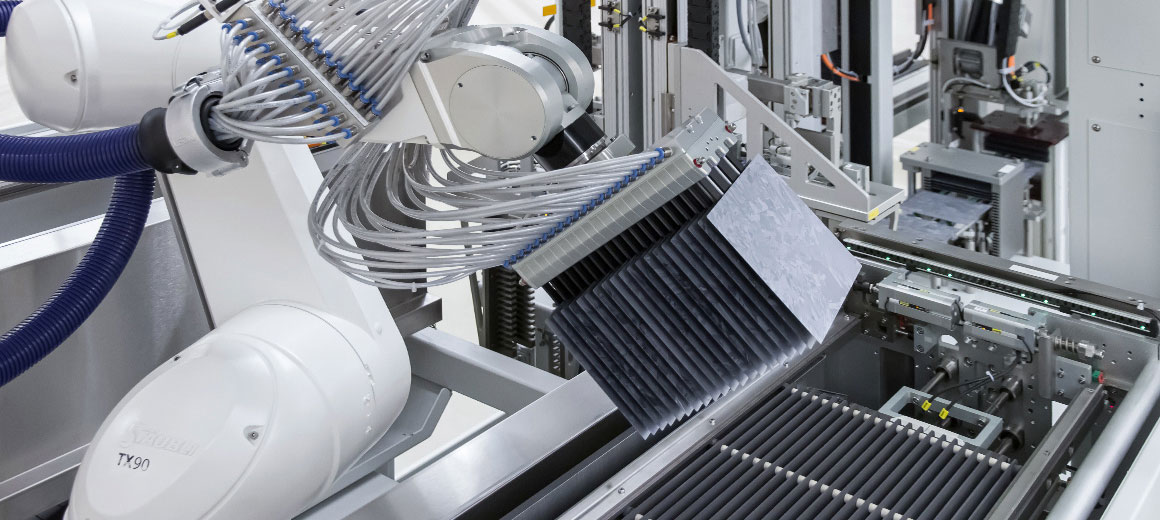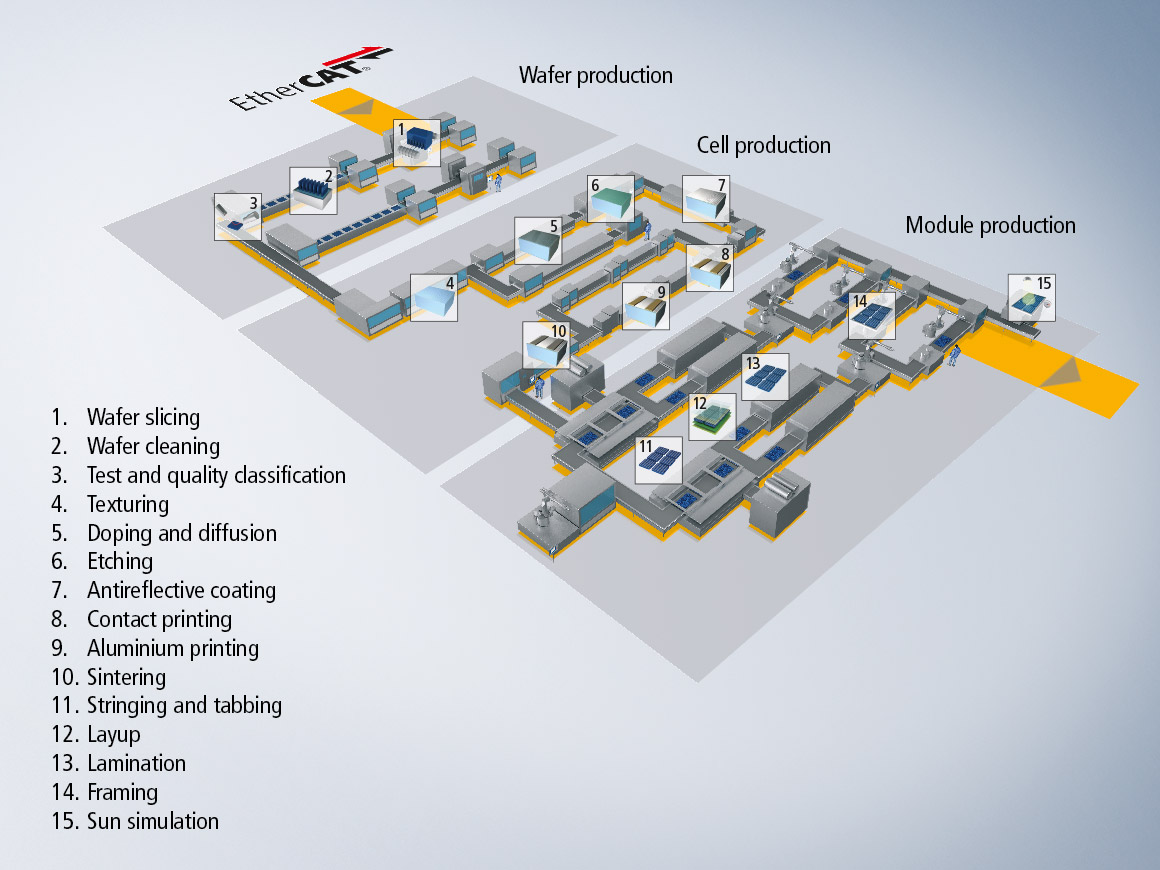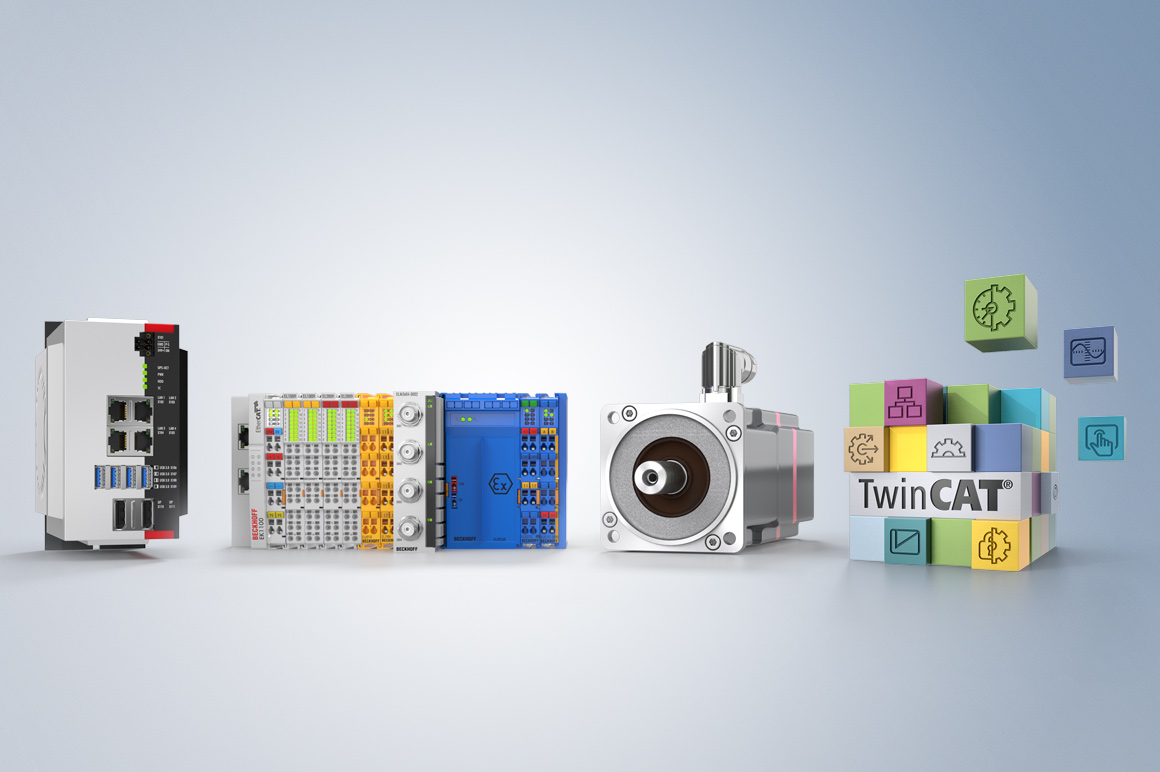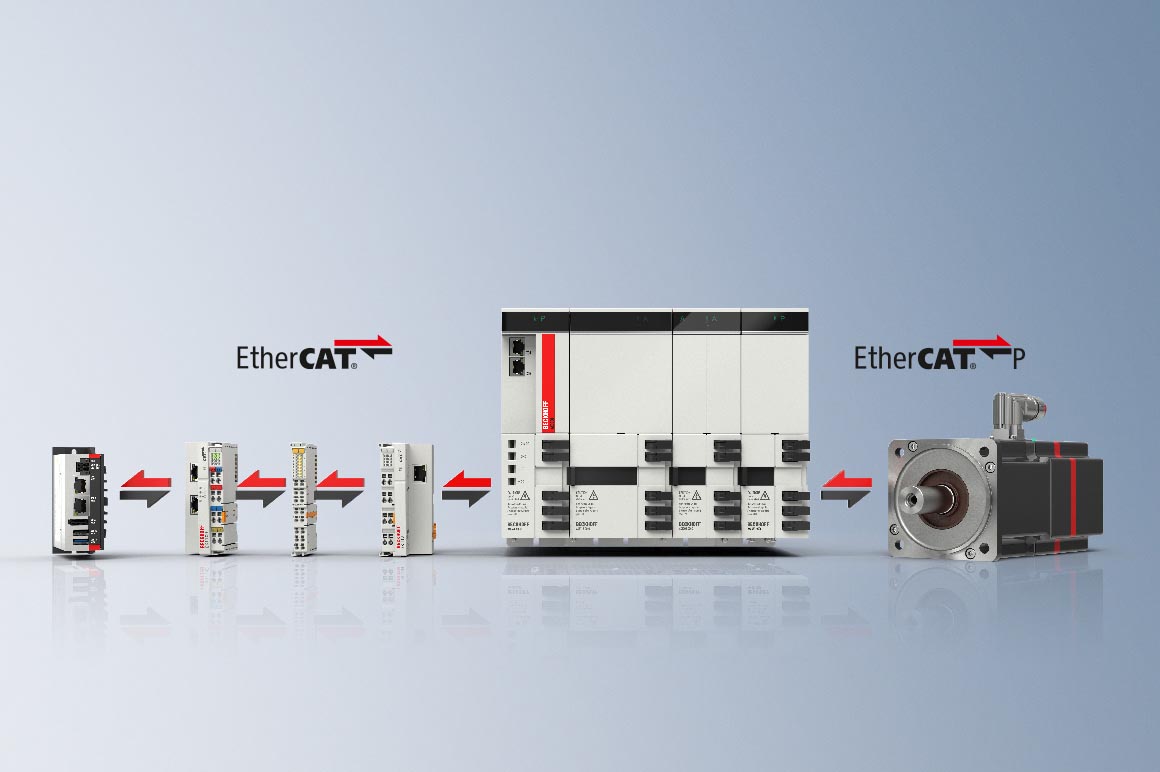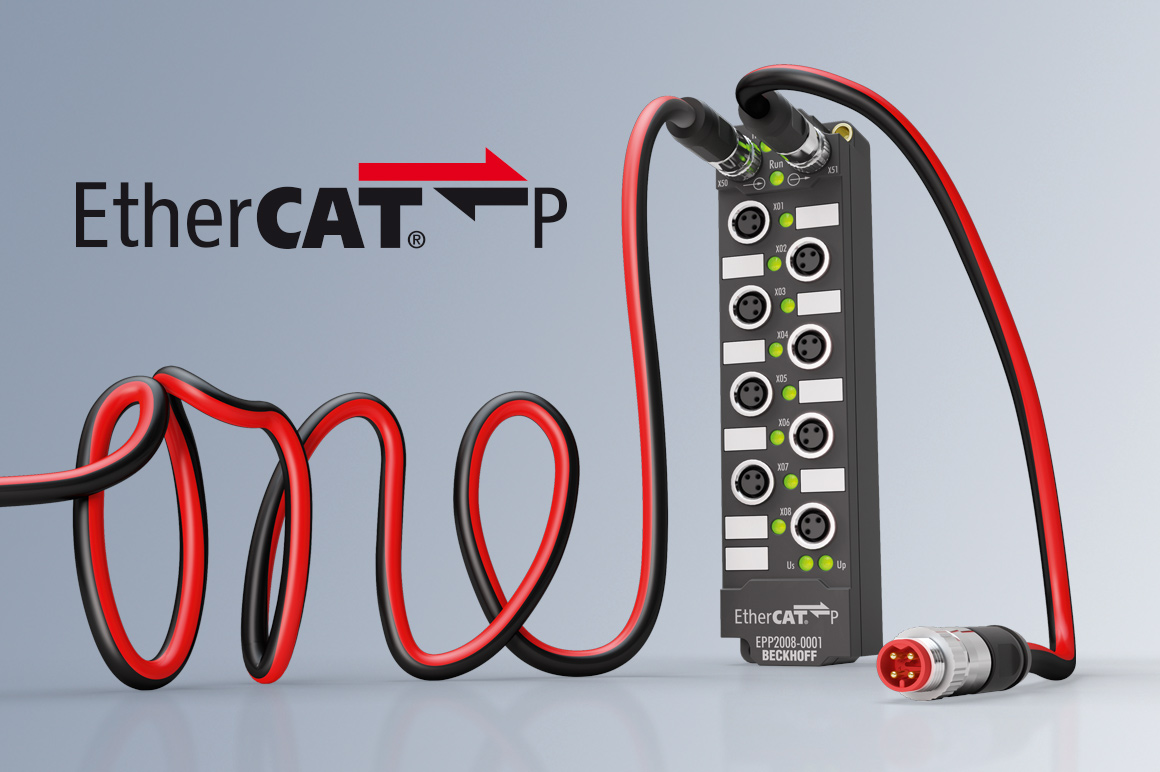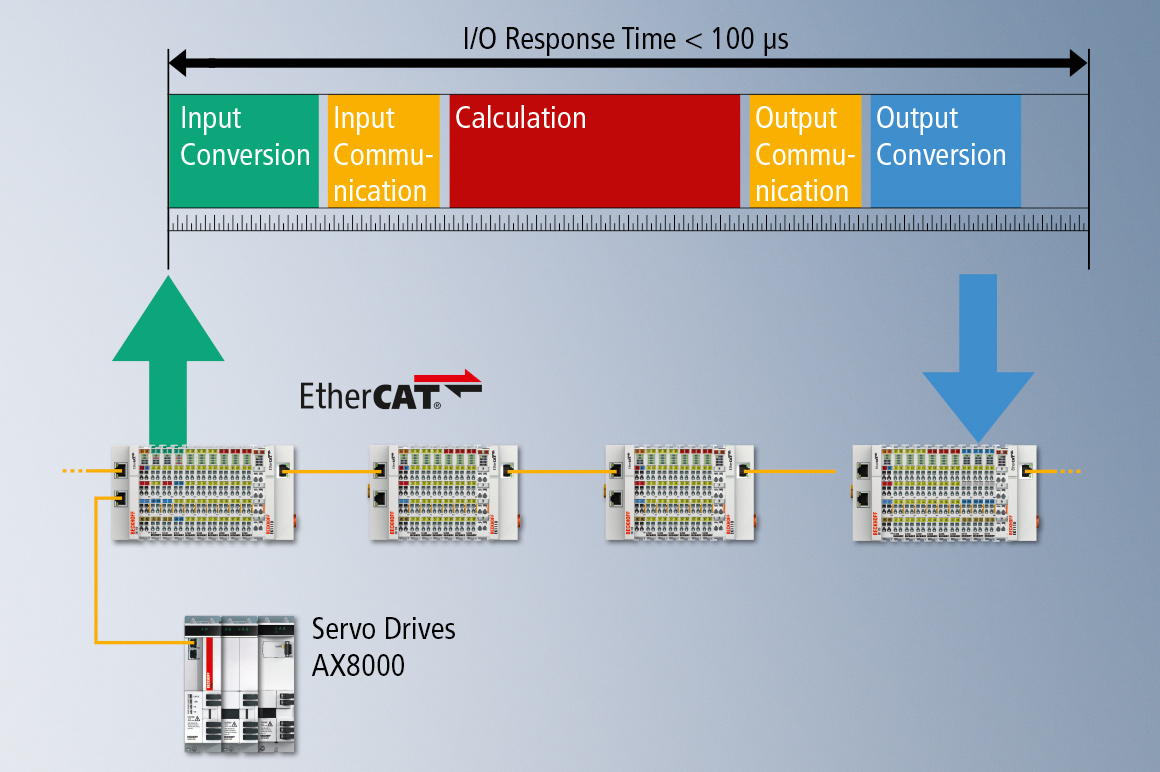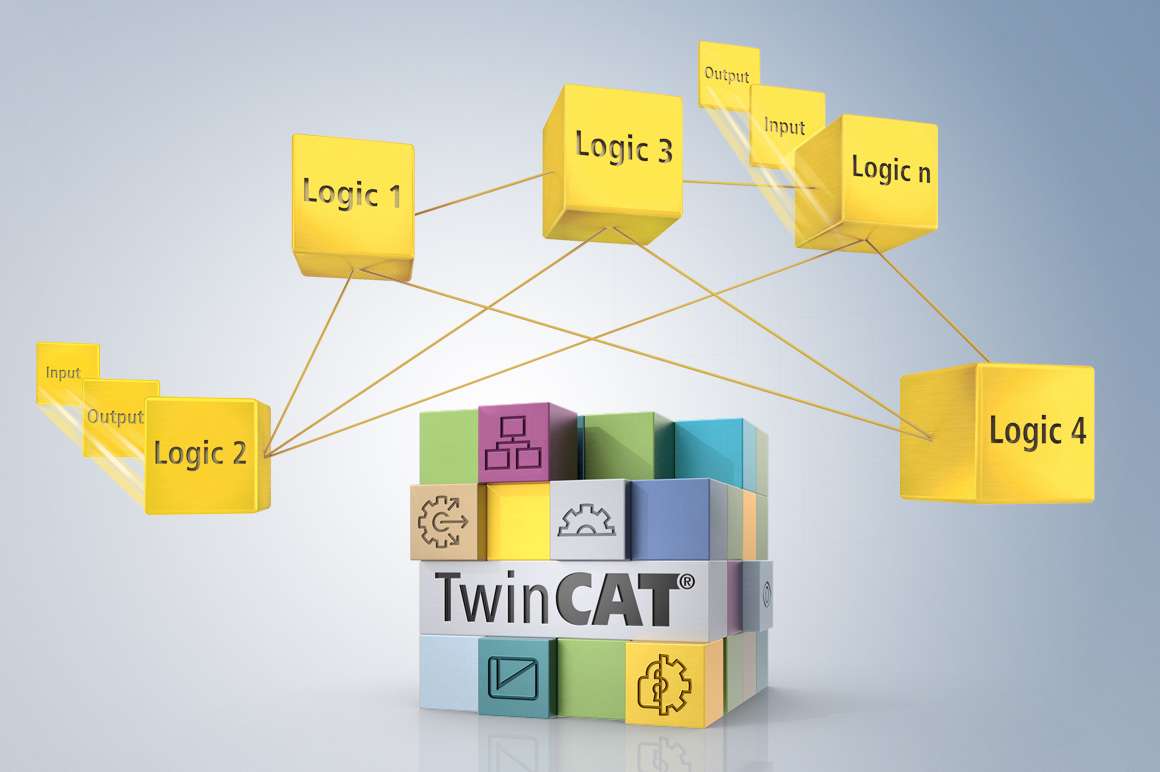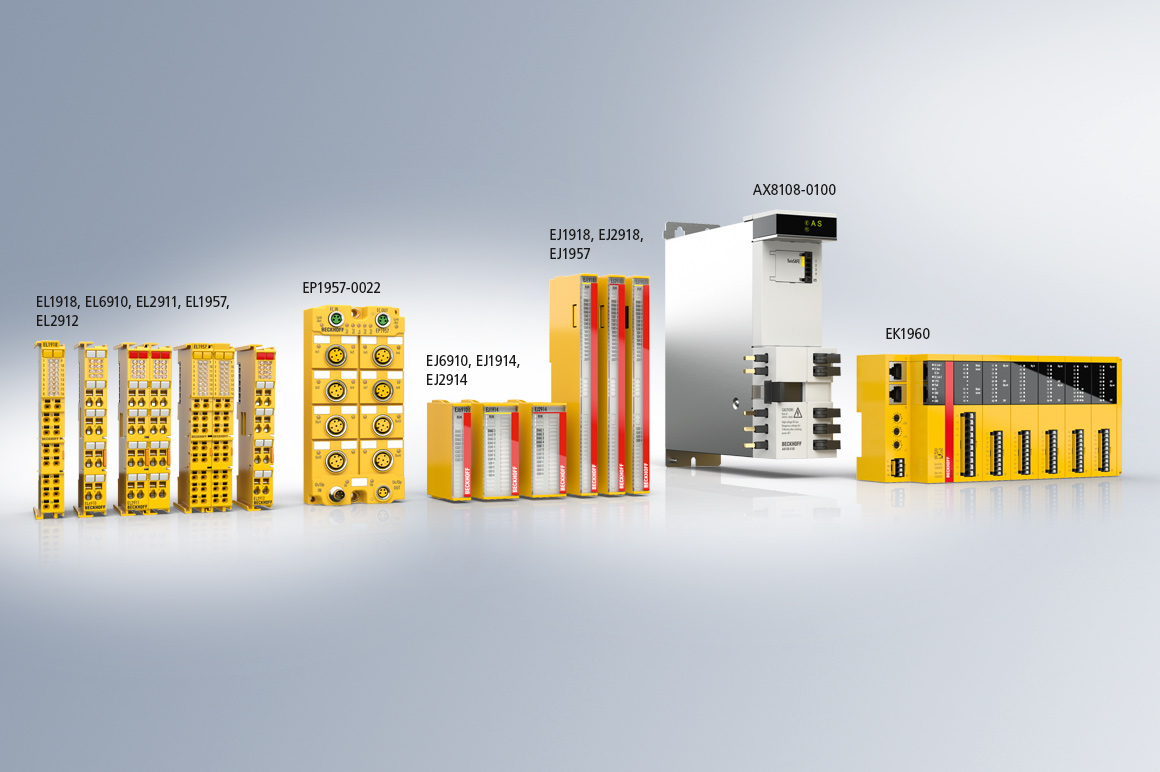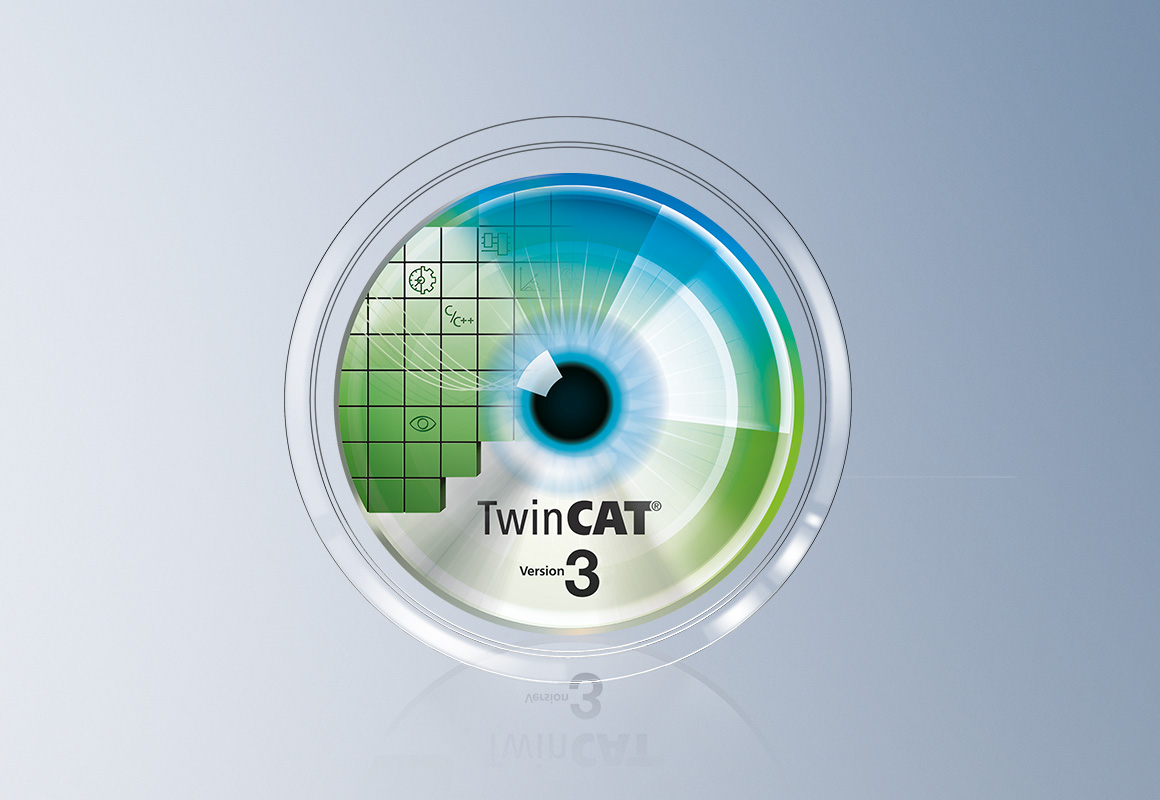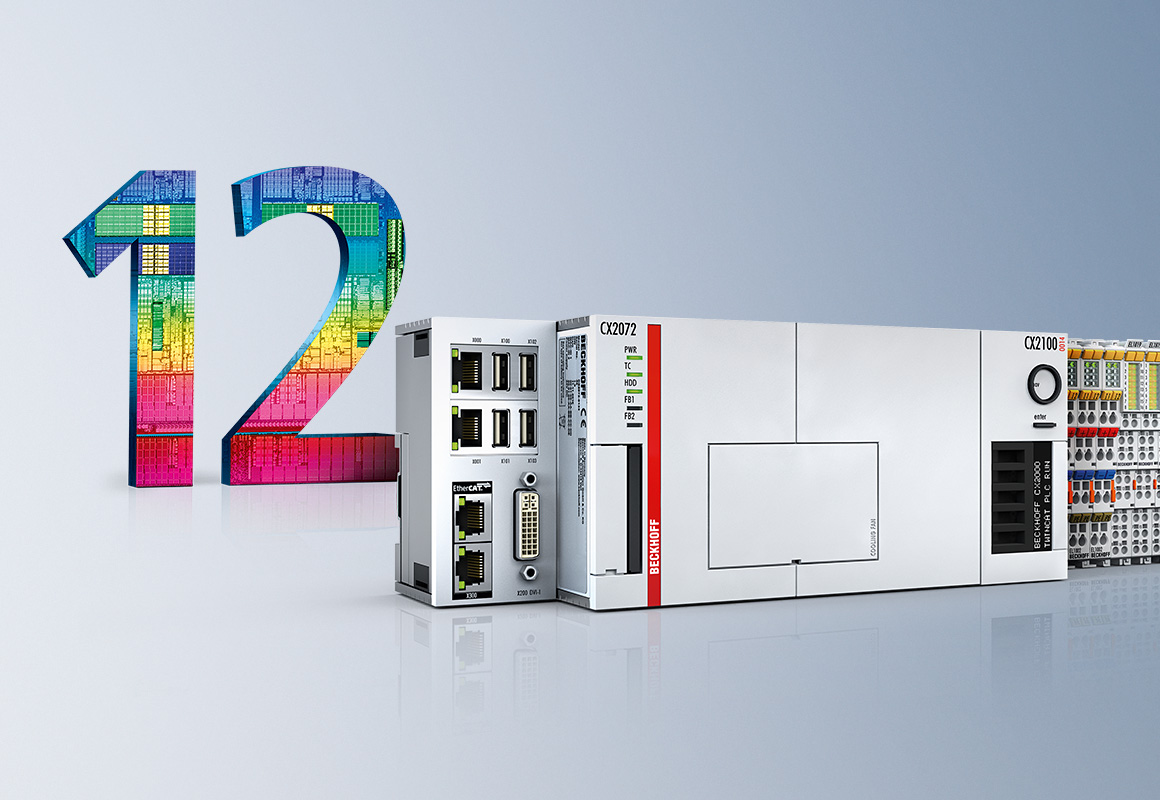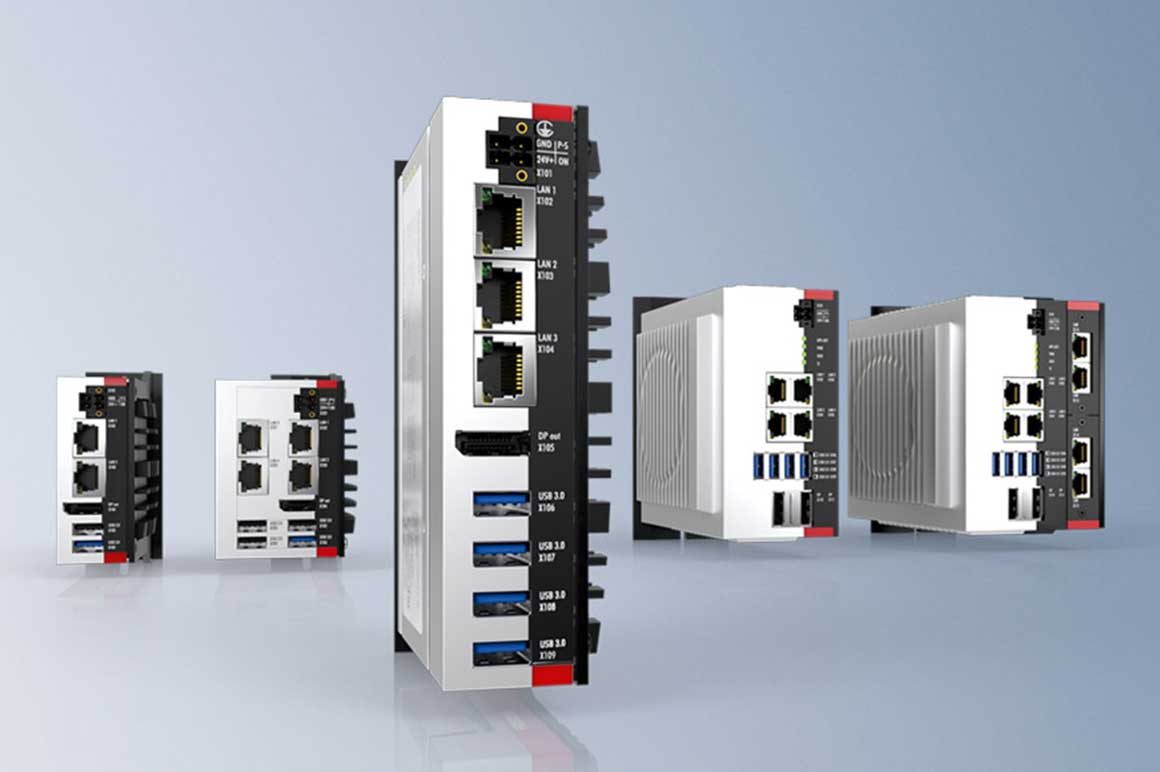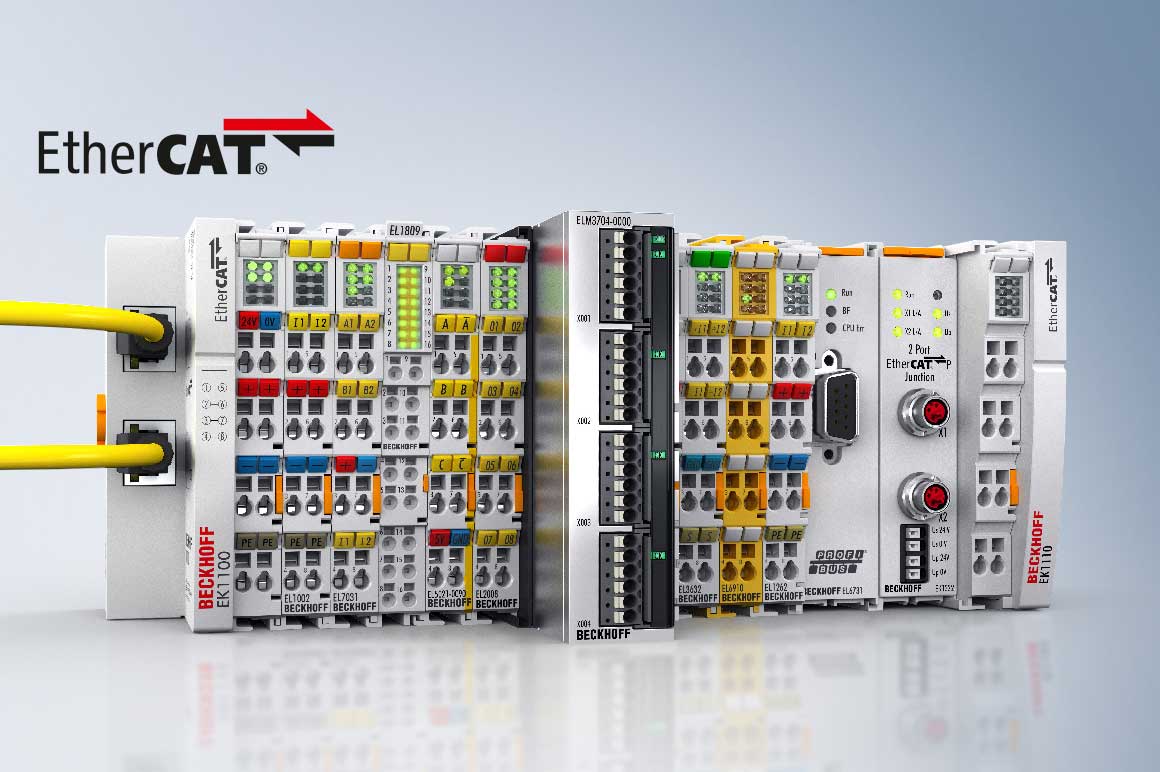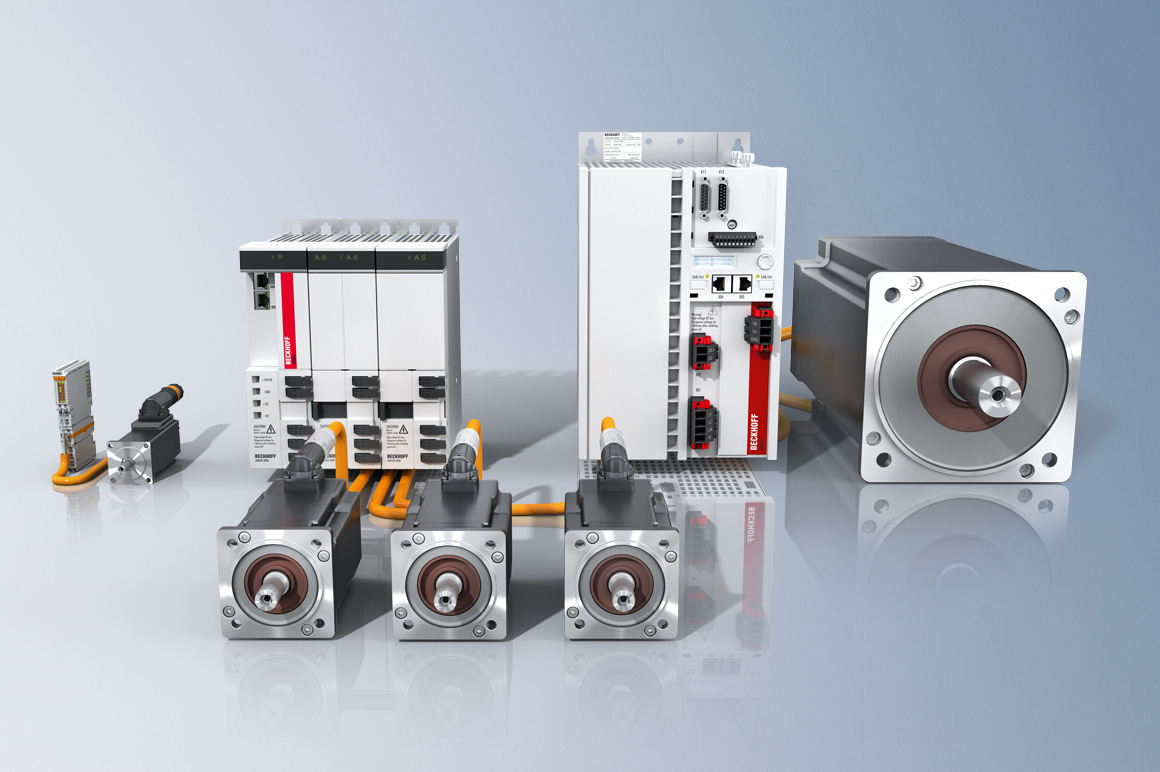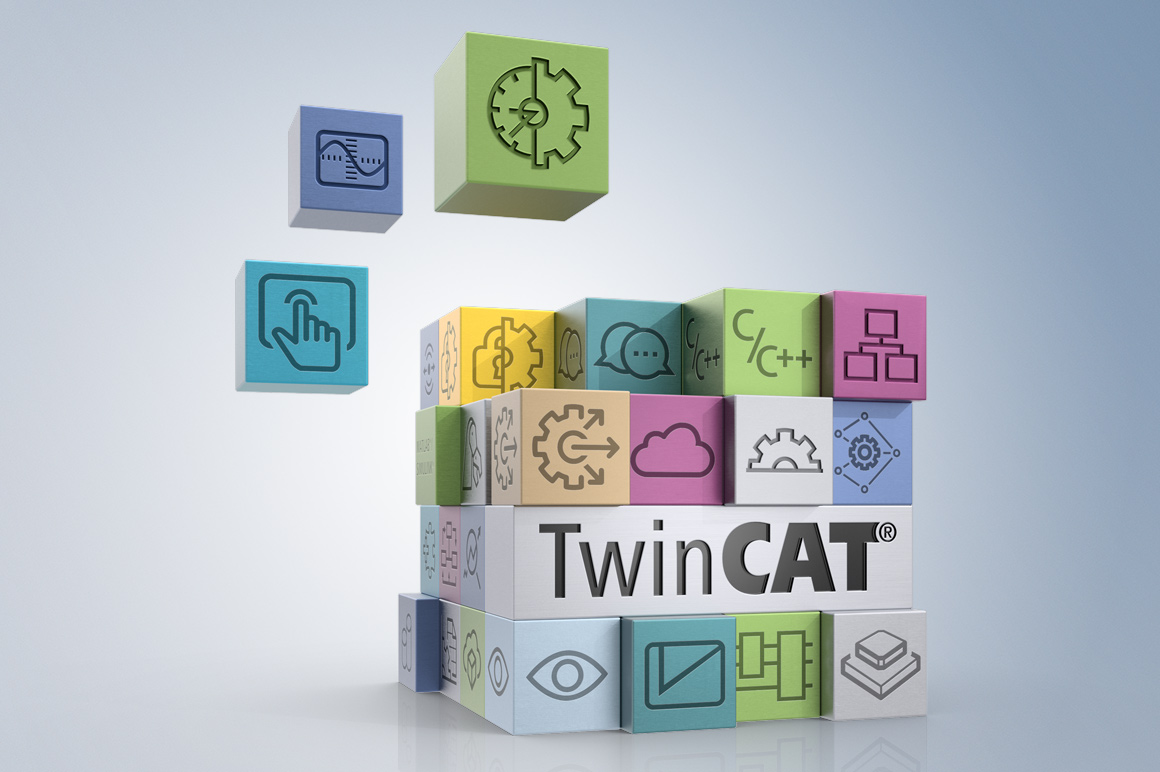TwinCAT simplifies project management, simulation and diagnostics
The demands placed on mechanical engineering in the photovoltaic industry are growing. The fulfillment of individual wishes adapted to the manufacturing process is the daily business and often forms the prerequisite for lasting success on the market. The basic problem in this is that the ever-increasing plant complexity leads to an enormous range of machine versions. The available development and design time is subsequently significantly reduced, while commissioning and on-site testing quickly exceed the allotted time. If it then turns out at the last moment that a detail was not considered during the design phase, it becomes all the more complex and expensive. The Beckhoff TwinCAT 3 software system provides a remedy.
Engineering and commissioning phase
In this phase, the connection for source code management systems integrated in TwinCAT supports the engineering team. All changes can be traced at any time from the very beginning, and different project versions can be merged in a targeted manner. The more developers adhere to fixed conventions, the more readable the source code will be. The monitoring of any specified programming rules is performed by a static code analysis. TwinCAT 3 PLC Static Analysis ensures that the programmer is alerted to deviations from established conventions during the engineering phase.
TwinCAT 3 Simulation
The earlier errors in the engineering phase of a machine are noticed, the lower the cost of eliminating them will be. In case of doubt, the time of recognition determines whether a project can be profitable at all. The trend is therefore toward machines being simulated during development. However, the requirements vary a great deal. A manufacturer of standard machines tends to use a simulation that is as detailed as possible, as the high “one-time effort” for its creation is always worthwhile. A manufacturer of special machines is more likely to need solutions that are easy and quick to implement. TwinCAT supports both user groups with several products:
TwinCAT 3 CAD Simulation Interface
- A machine is designed using modern CAD systems. The TwinCAT 3 CAD Simulation Interface is a tool for coupling TwinCAT with a 3D CAD system. TwinCAT thus controls a virtual photovoltaic machine represented in the CAD system in non-real-time. This 3D simulation of machines is a central part of the implementation of a virtual commissioning. In the simulation, the movements and interactions of the individual installed components are displayed in the group and collisions and critical machine states are determined in advance. In addition, the simulation is used to train operators and maintenance staff in advance for regular operation and to define work instructions for troubleshooting using simulated critical machine conditions
TwinCAT 3 EtherCAT Simulation
- The TwinCAT 3 EtherCAT simulation is used for real-time simulation of the connected devices via EtherCAT. This “virtual” hardware behaves exactly like “real” devices connected to EtherCAT, including all runtime properties. The aim is to test and optimize the generated control code at an early stage of machine engineering, even without real existing hardware, to accelerate the actual commissioning.
TwinCAT 3 Target for Functional Mockup Interface (FMI)
TwinCAT 3 Target for Functional Mockup Interface (FMI) supports the standardized interface for the coupling of simulation software. FMI is used by a great many software manufacturers that specialize in generating dynamic models of mechanical systems and bodies. The model generated in this way can be integrated into TwinCAT 3 and controlled like a real existing system in order to examine the properties. A simulation of these dynamic systems usually takes place at the beginning of the development of a machine and gives the mechanical designer and the software developer deep insights into the dynamic behavior of a machine.
TwinCAT 3 diagnostic functions
TwinCAT 3 has a built-in extensive diagnostic system. All system information can either be viewed directly in the TwinCAT 3 Engineering Environment (XAE) or can be recorded in real-time and in a cycle-synchronous manner with the TwinCAT 3 Scope. A subsequent analysis is also possible. The TwinCAT 3 Realtime Monitor enables the diagnosis and optimization of the runtime behavior of tasks and processes in the TwinCAT 3 runtime. And if you wish to go one step further: TwinCAT 3 Analytics is the optimal software tool for being able to realize and offer long-term analyses across several machines for diagnostic purposes, for machine and production data acquisition or for predictive maintenance.
